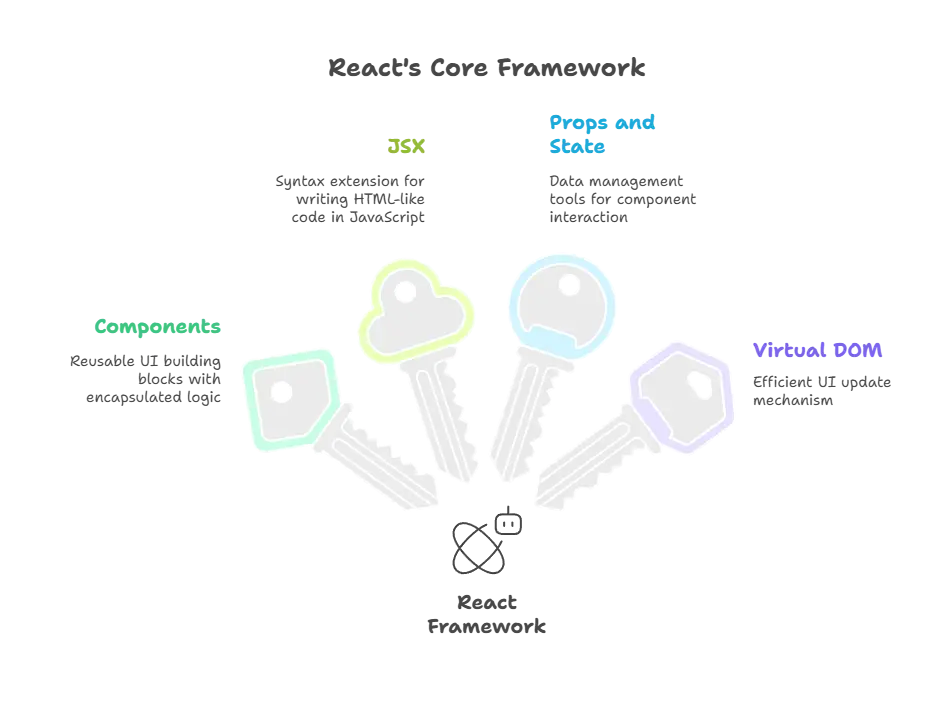Introduction to React:
React is a JavaScript library used for building user interfaces. It was developed by Facebook and released as an open-source project. React allows developers to create interactive and dynamic UIs for web applications.
Why React?
React simplifies the process of building complex user interfaces by breaking them down into smaller, reusable components. This component-based approach makes it easier to manage and maintain code, leading to better productivity and scalability.

Getting Started with React
React simplifies the process of building complex user interfaces by breaking them down into smaller, reusable components. This component-based approach makes it easier to manage and maintain code, leading to better productivity and scalability.
Hello World Example
Let’s dive into our first React example with a simple “Hello World” application. We’ll create a new React component and render it to the DOM to display a greeting message.
// Hello.js
import React from 'react';
function Hello() {
return <h1>Hello, React!</h1>;
}
export default Hello;
// App.js
import React from 'react';
import ReactDOM from 'react-dom';
import Hello from './Hello';
ReactDOM.render(<Hello />, document.getElementById('root'));
Explaining the Code
- In the above example, we define a functional component named
Hellothat returns a JSX element<h1>Hello, React!</h1>. - We then import and render the
Hellocomponent in our mainApp.jsfile. - Finally, we use
ReactDOM.render()to mount the component onto the HTML element with the IDroot.
When you run the application, you should see the text “Hello, React!” displayed on the webpage.
Key Concepts of React
Components
Components are the building blocks of React applications. They represent reusable pieces of UI, encapsulating their own logic and state. Components can be either functional or class-based.
JSX (JavaScript XML)
JSX is a syntax extension for JavaScript that allows you to write HTML-like code within your JavaScript files. It makes React components more expressive and readable.
Props and State
Props (short for properties) are used to pass data from parent to child components, while state is used to manage a component’s internal data. Props are immutable, while state is mutable and can be updated using setState().
Virtual DOM
React uses a virtual DOM to efficiently update the UI. When the state of a component changes, React reconciles the virtual DOM with the actual DOM, determining the minimal set of changes needed to update the UI
In this chapter, we introduced React, a JavaScript library for building user interfaces. We covered the basics of React development, including setting up the environment, writing a simple "Hello World" application, and understanding key concepts such as components, JSX, props, state, and the virtual DOM. Happy coding !❤️
